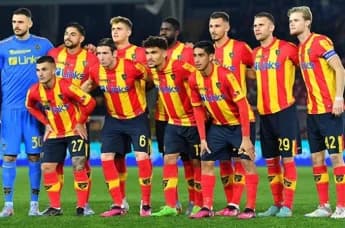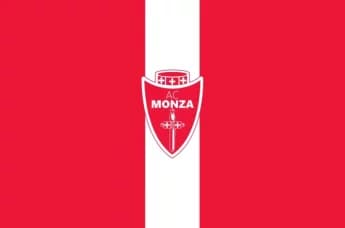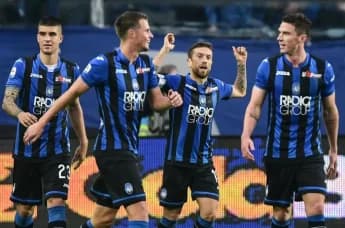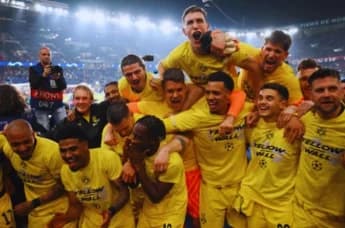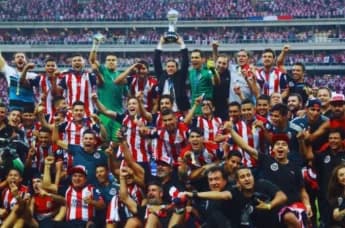Founded in 1913, Parma Calcio 1913 exemplifies perseverance in Italian football, overcoming challenges while fostering local pride and aiming for future successes in Serie A and beyond.
Parma Calcio 1913, located in the charming city of Parma in Emilia-Romagna, has been a fundamental part of Italian football since its establishment in 1913. Originally called Verdi Foot Ball Club, the team adopted its identity through its yellow and blue colors, which pay tribute to the city’s rich cultural legacy, particularly the renowned opera composer Giuseppe Verdi.
The club transformed into Parma Football Club later in 1913, adopting the distinctive white jerseys featuring a black cross. Throughout the years, Parma has come to represent resilience, enduring various phases of success and hardship. Their venue, the Stadio Ennio Tardini, has stood as a reliable host since 1923, representing stability in times of change.
The culture of Parma is deeply anchored in resilience, characterized by a devoted fanbase that remains steadfast through financial hardships and relegations. The club's history showcases a unique combination of local pride and global ambitions, establishing it as one of the most cherished teams in Italy.
In spite of numerous challenges, Parma has maintained its resilient spirit, reflecting the city’s values of dedication and hard work. From its modest origins to dramatic returns in Serie A, the club continues to stand as a symbol of hope and unwavering commitment.
Achievements of the Team
The period from 1992 to 2002 is regarded as Parma's golden age, setting a standard for success in Italian football. With the financial backing of Calisto Tanzi, the club achieved glory by winning eight significant trophies, which included three Coppa Italia titles and two UEFA Cups. Additionally, during this era, they accomplished their highest finishing position in Serie A, securing the runner-up spot in the 1996–97 season.
In European competitions, Parma secured esteemed titles, including the UEFA Cup Winners' Cup and the European Super Cup, demonstrating their capacity to contend with the best clubs in the continent. These victories reinforced their standing as a formidable presence on the global football stage.
Parma's remarkable achievement of securing three successive promotions from Serie D to Serie A following their bankruptcy in 2015 highlighted their unyielding spirit. This accomplishment not only showcased their resilience but also established a new record in the history of Italian football.
The club's rich history is further underscored by its involvement in European tournaments and its ability to cultivate talents such as Gianluigi Buffon and Hernán Crespo, both of whom achieved legendary status in the world of football.
Strengths and Weaknesses
The strength of Parma lies in its profound bond with the local community and its dedicated fanbase, who unwaveringly support the team in both good times and bad. The club has demonstrated remarkable resilience in the face of challenges, focusing on teamwork and determination as key components of its recovery.
The club's infrastructure, notably the historic Stadio Ennio Tardini, lays a strong foundation for success. Parma's legacy of nurturing talented players through its youth academy ensures a continuous flow of promising talent. Their recent return to Serie A marks a significant moment in their competitive revival.
Parma has frequently faced financial instability, resulting from mismanagement that has led to various downturns. The process of rebuilding following bankruptcy has proven to be difficult, as limited resources have hindered their capacity to recruit high-caliber players.
The team has encountered fluctuations in performance, making it difficult to secure a stable position in Serie A. Concerns have arisen regarding defensive weaknesses and insufficient squad depth in recent seasons. Tackling these challenges will be essential for achieving long-term success.
Tactics & Playing Style
Over the years, Parma has adapted its tactical strategy, successfully merging the traditional defensive discipline characteristic of Italian football with an exciting attacking style. Central to their gameplay is a strong focus on teamwork and well-organized defensive formations, which have become defining traits of the team.
During the 1990s, Parma gained a reputation for its practical and successful style of play, particularly excelling in set pieces and counterattacking strategies. Players like Crespo and Enrico Chiesa flourished in a system that harmoniously combined creativity with effectiveness.
Under the current management, Parma aims to respond to the challenges of contemporary football by incorporating a style focused on ball possession and rapid transitions. Their strategy places emphasis on exploiting the wide areas of the pitch and leveraging the technical abilities of their attacking players.
The team's ability to adapt to the tactical approaches of their opponents has been a significant aspect, ensuring they remain competitive even when facing stronger rivals. Striking a balance between tradition and innovation will be crucial as they address the challenges of Serie A.
Memorable Matches
In the 1993 UEFA Cup Final, Parma achieved a 3-1 aggregate win against Royal Antwerp, claiming their first European trophy and signaling their entry into the international football arena.
1995 UEFA Cup Winners’ Cup Final: Parma's tactical excellence and strong defensive performance were highlighted in their 1-0 victory over Arsenal in Copenhagen.
1999 UEFA Cup Final: A decisive 3-0 triumph against Olympique de Marseille showcased Parma's supremacy in their golden period.
2015 Serie D Promotion: Following their bankruptcy, the club embarked on a remarkable journey back to professional football with a record-setting season in Serie D, restoring hope among their supporters.
Looking Ahead
Parma's primary goal is to establish a strong foothold in Serie A after their promotion in 2023. It will be crucial to enhance the team through targeted signings and to nurture young talent for ongoing success.
Achieving financial stability is a key objective, as efforts are made to secure investments and improve revenue channels. Enhancing the facilities, which includes the modernization of Stadio Ennio Tardini, is expected to boost fan interaction and improve the overall matchday experience.
The club's objective is to reclaim its previous European success by gradually assembling a competitive squad. Key aspects of their vision include achieving consistent performances and adopting innovative football tactics.
Built on a solid foundation, Parma is ready to regain its position as a powerful contender in Italian football, representing the resilience and passion that characterize its identity.



